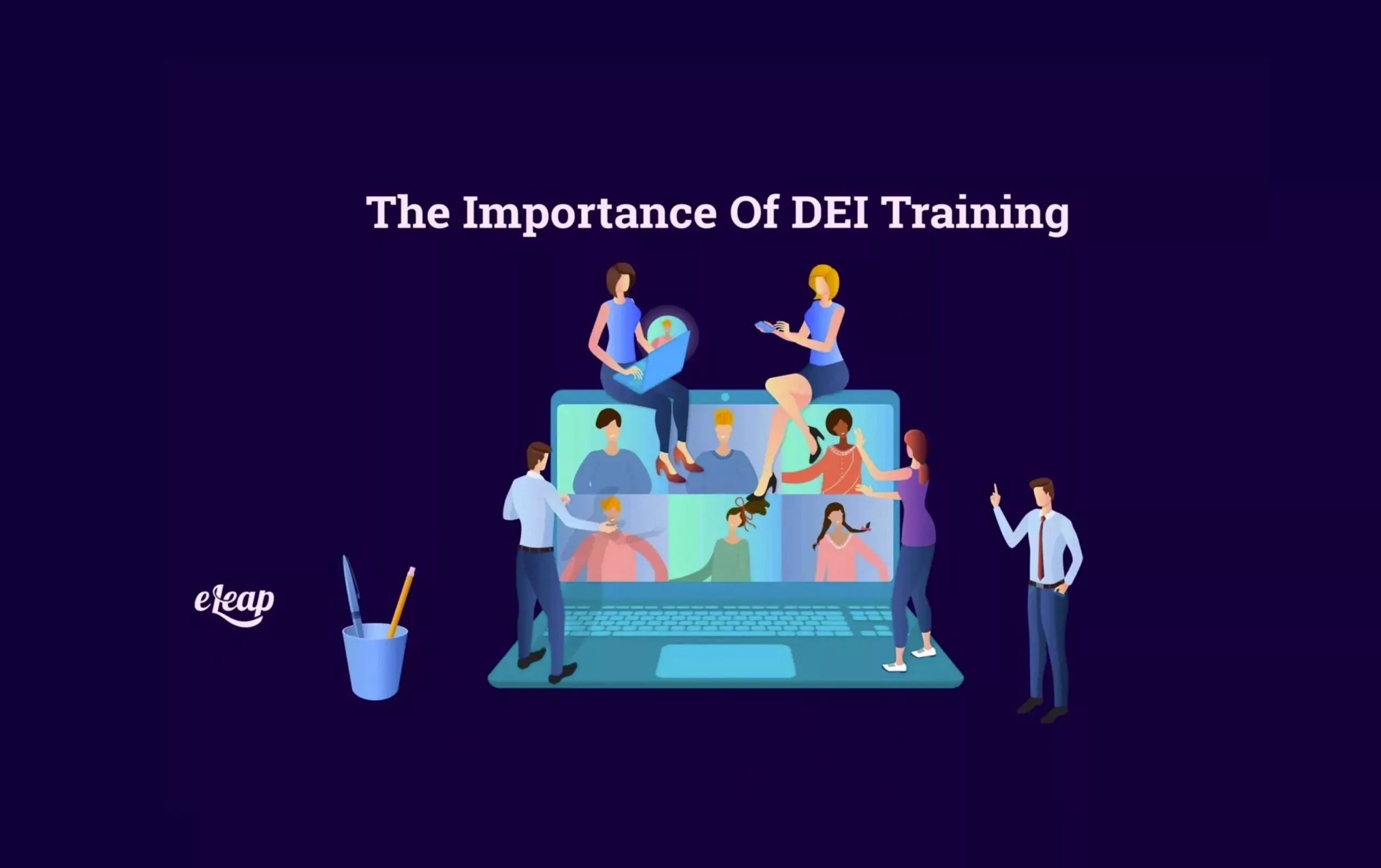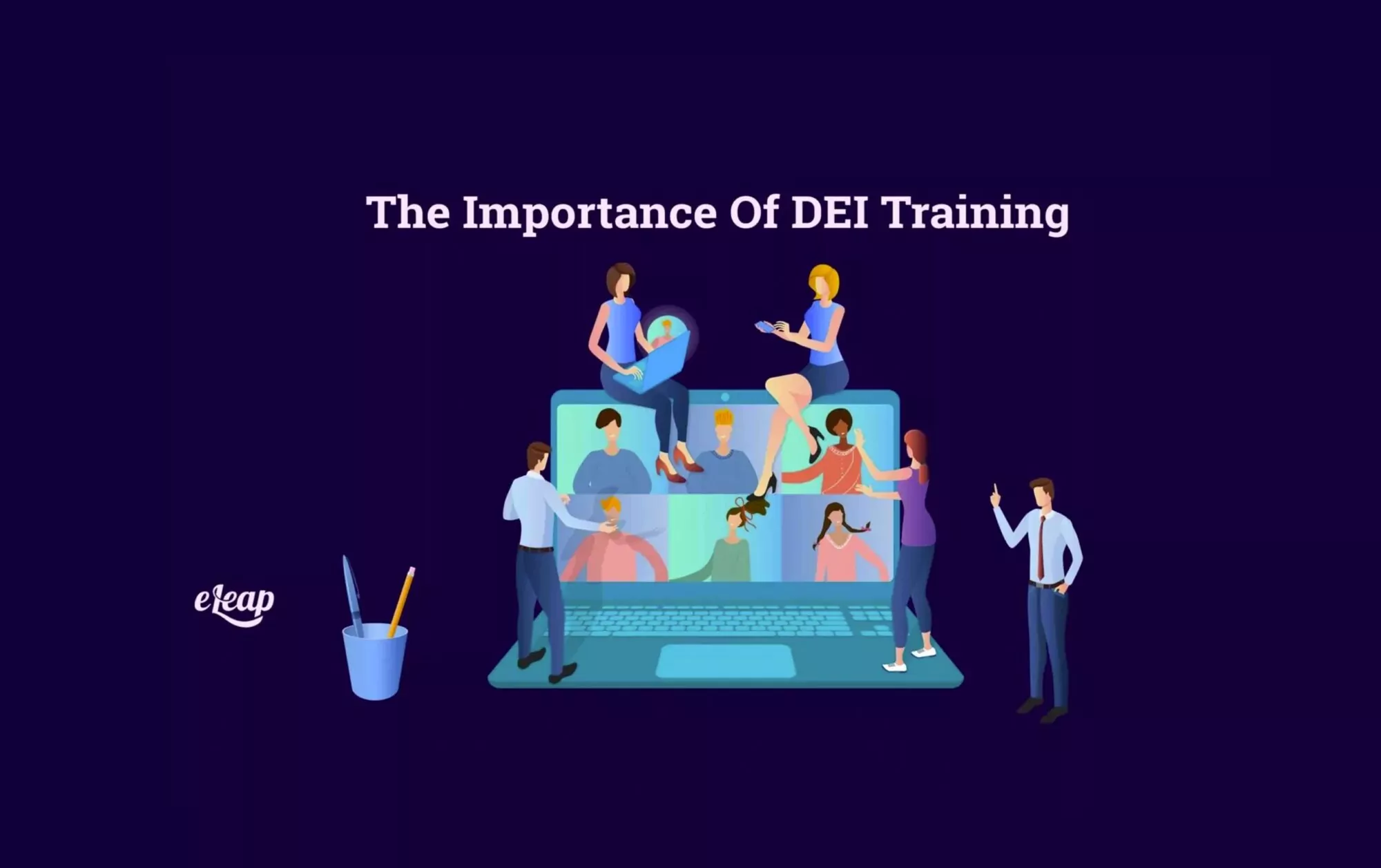The Importance of DEI Training

When it comes to fostering an inclusive and diverse environment in the workplace, DEI training is a key feature. DEI, which stands for Diversity, Equity, and Inclusion, can help employees. Learn best practices for working in harmony with different cultures and views.

DEI departments have exploded in the last few years. A study showed that from 2019 to 2021, senior DEI leaders were 2.6x more likely to now hold C-suite positions. Globally, over 75% of DEI leaders reported having budgets of over 10 million dollars. It’s clear that organizations are pumping capital into DEI initiatives, and it makes sense given the racially charged events of the last few years, as well as an increasingly diverse population.
DEI won’t slow down any time soon. As Generation Z continues to graduate college, the push toward diversity and inclusion will only grow, given this generation is considered the most diverse in American history. However, throwing money at DEI departments and hoping for the best won’t solve things. Million-dollar budgets are only useful if companies understand how to allocate these funds to create holistic and effective DEI training programs.
What Are the Key Features of DEI Training?
There are many issues we face, and still, many to tackle when it comes to DEI training within companies. This means many techniques can be applied when implementing DEI training. That said, DEI training tends to focus on changing behaviors and calling attention to unconscious behaviors of the workforce.
In essence, effective DEI training focuses on the following 3 categories in some way:
- Unconscious biases and breaking stereotypes.
- Awareness (Microaggressions, belonging, etc.)
- New skill attainment (Allyship, inclusive interviewing and management styles, etc.)
Five Suggested DEI Training Topics
Implementing a successful training program for the first time is a big undertaking and is likely why so many corporations are designating a director of DEI for their organizations. These executives typically create and implement the key topics that will be covered in DEI training.
Below we will dive into 5 key topics that should be focal points during training, according to executives in DEI positions at their companies.
Unconscious Bias Training
Sometimes called implicit bias, an unconscious bias is when individuals blindly rely on assumptions or stereotypes about a certain kind of person. Individuals do this unknowingly, meaning it is so ingrained that they won’t even know they have been biased.
That is why it’s so important to draw attention to these biases within employees. Luckily, these biases are not permanent and can be easily changed with the right training techniques and by having the right conversations.
In unconscious bias training modules, employees should be encouraged to self-assess. There are implicit bias quizzes a company can utilize to give the individual an unbiased baseline of where they lie on the scale of how much they lean into unconscious biases. This can stimulate a roundtable discussion about this among employees, which is important in DEI training. One of the most important attributes of this training is that employees are coming together periodically to share experiences and key takeaways.
Unconscious bias training should also focus on exploring how biases develop and asking employees who may be of a different race, religion, or sexual orientation to share their experience with such biases in addition to corrections that could be made to the thoughts behind them. The end goal is that employees walk away with bias literacy, another way of saying they are aware of both their own and others’ possible biases and have the tools they need to combat them.
Inclusive Language Training
The words we use at work make a big difference. Going along with unconscious bias, sometimes the words we use can be unintentionally offensive or discriminatory toward certain groups. Inclusive language training, otherwise known as inclusive communication, can help your team collaborate better by understanding the best practices for using inclusive and welcoming language.
Inclusive language should focus on not using words that may alienate or patronize certain people. Key teachings in an inclusive language training module should be:
- Learning about pronouns and how to correctly address someone.
- Ditch your assumptions. For example, when writing an email to a CEO, do you implicitly assume he’s a man? When you see a certain name come through on an email, do you immediately assume their race? Even these innocent assumptions can work their way into language if employees are not self-aware.
- Don’t use ableist language. Certain colloquial terms, like “She’s crazy!” or “I’m feeling ADHD today”, may seem harmless to say in social circles among employees. However, these types of phrases make light of serious mental disorders. Rewiring how we think about these words is important in the workplace.
- Accept that some won’t like it. Old habits die hard, particularly in older employees who have been with the organization for years and years. Some employees may assert that DEI training is pointless or a waste of resources. However, if you can encourage an open mind among employees and do your best to present persuasive information, even the skeptics may walk away with a new skill or two.
Cultural Competency
Cultural competency training focuses on how to interact with those who have different cultures than you do. In some cases, these cultures may be vastly different, which can lead to employees unintentionally offending a coworker or client.
Even if the company is not global and only operates in the U.S., understanding different cultures is still important. The U.S. is a melting pot of many different cultures and religions and is only getting more diverse. This training should focus on the cultural norms of different groups, as well as any off-limits actions for those cultures, their holidays, beliefs, etc.
Even better if your company has an employee who practices a certain culture and can do a Q&A with the employees. Or you can seek out guest speakers from the cultures you plan to raise awareness on. The intent of this portion of training should be to strip away all biases and judgment and learn something new about different cultures. Plus, it helps employees be stronger communicators with internal and external cohorts who may come from different cultural backgrounds than they do.
Empathy and Belonging
The portion of training focused on empathy and belonging could cover lots of different DEI topics and touchpoints. Empathy training should focus on encouraging employees to take a step into another’s shoes, and think critically about subjects like privilege, whiteness, racial injustice, and more.
Training and Development through ERGs
Employee Resource Groups (otherwise known as ERGs) offer opportunities for marginalized professionals to get together and share their experiences, network, and support each other. In planning your DEI training, it’s extremely important to not overlook what help and support your marginalized employees need to feel empowered.
ERGs are extremely valuable for minorities because they allow them to share their experiences and find support within a professional setting. Additionally, allies and those who are not considered marginalized are typically welcome to join ERG meetings and discussions.
Having a non-marginalized employee join an ERG meeting can help them understand what struggles their marginalized colleagues have faced, which can be a powerful way to encourage changes in behavior among more privileged employees.
Celebrate Culture
An easy and fun DEI concept to implement is acknowledging non-traditional holidays that most Americans might not celebrate, such as Kwanzaa or Diwali. Just the action of adding these holidays to the company-wide calendar and acknowledging them can be powerful for marginalized employees.
Some companies might send out information on the different holidays that month and their origins. Others might encourage employees who celebrate a certain holiday to educate their team about their traditions, perhaps by showing them how to make a traditional holiday dish. Overall, showing there are more holidays than the federal ones Americans usually acknowledge is powerful for both marginalized and non-marginalized employees.
How To Implement a Successful Delivery of DEI Training
The processes and research needed to create and implement a robust DEI training program in your company are numerous. That is why most companies have a DEI specialist to help. However, the most senior leaders decide where and how funds will be allocated. So they must be totally on board to put the time, resources, and money into a DEI training program to make it the best it can be.
Good delivery goes beyond making sure employees complete their training. It also encompasses long-term results and accountability. For example, do your managers need additional support or resources to manage their employees with diversity in mind? Do employees understand the importance of the training, and do they feel empowered to make insightful suggestions for improvement?
A culture of acceptance and tolerance for all kinds of people should be woven into the fabric of your company over time. This means revisiting the DEI concepts and making sure managers are holding employees accountable for their language and actions in the workplace. Continuous improvement and self-awareness of biases help employees and employers create a more welcoming workplace. DEI training should be frequently revisited and new modules should be added once employees have mastered the basic concepts of diversity and inclusion.
Bottom Line
DEI focuses on creating a work environment where diversity is celebrated, and equity and inclusion for all is the goal. DEI training helps managers and employees reframe their mindset and prepares them to make the mental shift needed to be more sensitive to other cultures in the workplace.
Using DEI training, employers can give their workforce a valuable tool belt to challenge their own biases and become better, more welcoming employees in the long run. This not only helps everyone feel more comfortable at work. But it aids recruiting efforts and online rankings of companies, too. If your organization doesn’t have a DEI initiative, make it a priority to ensure your organization is the most accepting and inclusive environment possible – your business will thank you for it!